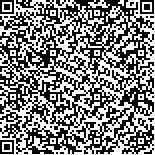|
|
| |
|
|
| 本文已被:浏览 469次 下载 398次 |

码上扫一扫! |
|
|
| 近5年中医药治疗肩周炎临床研究结局指标的现状分析 |
|
毛泽芳1,2, 王海腾1,2,3, 王晓宇1,2, 范顺1,2, 王乙焜1,2, 吴秋君1,2, 张海宁1,2, 王金贵1,2,3
|
|
1.天津中医药大学第一附属医院, 天津 300381;2.国家中医针灸临床医学研究中心, 天津 300381;3.国家中医药管理局推拿手法生物效应三级实验室, 天津 300381
|
|
| 摘要: |
| [目的] 评价近5年中医药治疗肩周炎临床研究随机对照试验(RCT)结局指标的选择应用情况,为建立能够体现中医药辨证论治效果的证候疗效特色结局指标集提供基础。[方法] 系统检索中国知网、万方数据知识服务平台、维普网、中国生物医学文献服务系统、PubMed和Cochrane Library等数据库,通过筛选文献、提取资料、评价偏倚风险,采用定性分析的方法描述纳入研究的RCTs的结局指标的应用情况。[结果] 共纳入108篇RCTs,将其结局指标按照功能属性分为症状体征、生活质量、中医证候、理化检查、安全性、远期预后6类,其中应用频数较高的为总有效率86项(79.62%)、疼痛程度96项(88.69%)、视觉模拟评分法(VAS评分)63项(58.33%)以及简易McGill疼痛问卷(SF-MPQ评分)26项(24.07%)、肩关节功能81项(75.00%)[Constant-Murley肩关节评估量表45项(41.67%)以及肩关节活动度ROM评分13项(12.04%)]以及实验室指标30项(27.78%)等,这些会影响临床研究结果的应用价值。[结论] 临床研究中,中医药对肩周炎的治疗有着重要的作用,但在疗效评定时,结局指标选择的多样化会影响研究结果的应用价值,应当构建必须报告的、统一的、标准化的以及体现辨证论治干预效果的证候疗效特色结局指标集。在开展该领域的研究设计前,应当加强研究的方法学质量,纳入疾病时充分考虑中医证候相关因素,设计更加具有中医特色的实用性RCT。在中医临床疗效评价体系中,应在中医基础理论的指导下,合理选择结局指标,完善相应的评价方法,提高中医药临床研究的研究效率。 |
| 关键词: 中医药 肩周炎 临床研究 随机对照研究 结局指标 |
| DOI:10.11656/j.issn.1672-1519.2023.08.15 |
| 分类号:R684.3 |
| 基金项目:国家区域中医(推拿)诊疗中心项目(20200424);国家自然科学基金项目(81873394、81873393);国家中医药管理局中医药传承与创新“百千万”人才工程(岐黄工程)岐黄学者(国中医药人教函〔2021〕203号);天津市131优秀人才培养项目;天津中医药大学第一附属医院拓新工程课题(院ZD202105);第七批全国老中医药专家学术经验继承工作项目。 |
|
| Analysis of the current status of the past five years clinical research ending indicators of traditional Chinese medicine treatment of shoulder periarthritis |
|
MAO Zefang1,2, WANG Haiteng1,2,3, WANG Xiaoyu1,2, FAN Shun1,2, WANG Yikun1,2, WU Qiujun1,2, ZHANG Haining1,2, WANG Jingui1,2,3
|
|
1.The First Affiliated Hospital of Tianjin University of Traditional Chinese Medicine, Tianjin 300381, China;2.National Clinical Medical Research Center for Acupuncture and Moxibustion, Tianjin 300381, China;3.Level Ⅲ Laboratory of Biological Effects of Tui Na Manipulation, State Administration of Traditional Chinese Medicine, Tianjin 300381, China
|
| Abstract: |
| [Objective] To evaluate the selection and application of outcome indicators in randomized controlled trial(RCT) of clinical studies of Chinese medicine for the treatment of frozen shoulder in the past five years,and to provide a basis for the establishment of a set of outcome indicators with evidential efficacy characteristics that can reflect the effectiveness of syndrome differentiation and treatment of Chinese medicine. [Methods] The Chinese and English databases such as such as CNKI,Wanfang Data knowledge service platform,VIP,China biomedical literature service system,PubMed and Cochrane library were systematically searched to describe the application of outcome indicators for the RCTs included in the study by screening the literature,extracting information and evaluating the risk of bias,using a qualitative analysis. [Results] A total of 108 RCTs were included,and their outcome indicators were classified into six categories according to their functional properties:symptoms and signs,quality of life,Chinese medicine symptoms,physical and chemical examination,safety,and long-term prognosis,of which the most frequently used were 86 items with a total effective rate of 79.62%,96 items with a pain level of 88.69%,visual analogue scale(VAS) 63 items 58.33% and 26 items with a short-form McGill Pain Questionnaire(SF-MPQ). 58.33% on the visual analogue scale,26 items(24.07%) on the Short-Form McGill Pain Questionnaire(SF-MPQ),81 items(75.00%) on the shoulder function(41.67% on the Constant-Murley Shoulder Assessment Scale(45 items) and 12.04 on the shoulder mobility ROM score(13 items),and 30 items on the laboratory indicators(27.78%). [Conclusion] In clinical research,traditional Chinese medicine (TCM) plays an important role in the treatment of scapulohumeral periarthritis. However,in the evaluation of efficacy,the diversity of outcome measures can affect the applied value of the study results. It is necessary to construct a syndrome efficacy index set that must be reported,uniform,standardized and reflect the effects of syndrome differentiation and treatment interventions. Before conducting research and design in this area,it is necessary to strengthen the methodological quality of research,fully consider factors related to TCM syndromes when incorporating diseases,and design more practical RCTs with TCM features. In the evaluation system for the clinical efficacy of TCM,it is necessary to properly select the outcome indicators,improve the corresponding evaluation methods,and improve the efficiency of TCM clinical research under the guidance of the basic TCM theory. |
| Key words: Chinese medicine frozen shoulder clinical study randomized controlled study outcome indicators |
|
|
|
|
